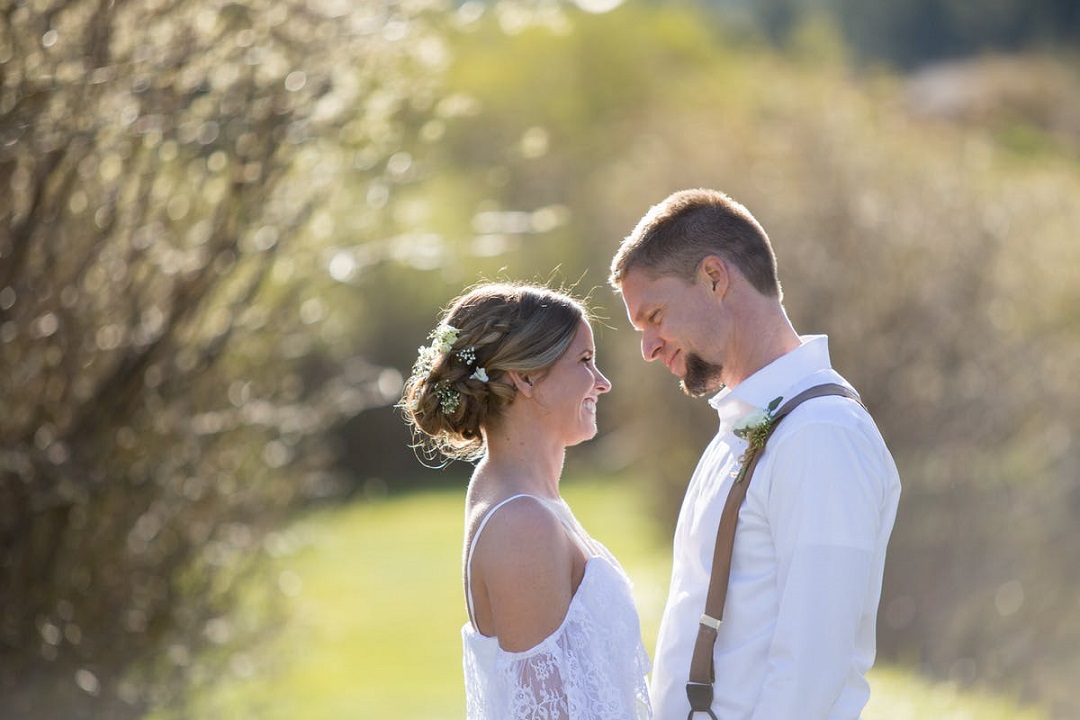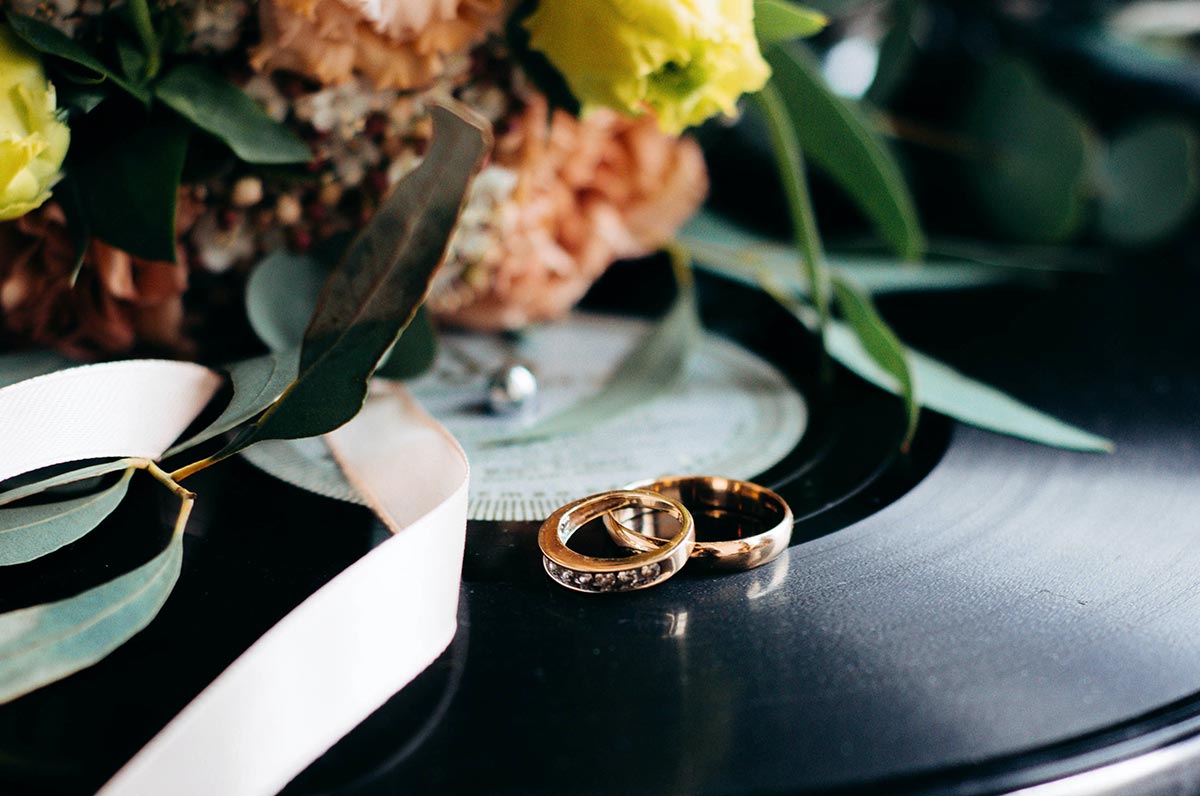- Expert advice/
- Wedding planning 101/
- Wedding day/
- What Is the History of the Garter Toss?
- Wedding day
What Is the History of the Garter Toss?
Learn more about the origins and history of the bridal garter toss and the meaning behind the tradition.
Last updated February 5, 2024

The garter toss—where the groom removes a garter from the bride’s leg and throws it to a jostling mob of single male guests—is one of the more lively parts of a wedding celebration.
But now, many couples are debating whether to include the time-honored practice in their modern weddings, and studies show that its omission from the majority of weddings is one of the biggest ways that wedding parties today differ from those of our parents’ generation or even from a few years ago. However, not many are familiar with the surprising history behind this age-old ritual, which is said to be one of the oldest wedding customs. Here, learn more about the origins and history of the wedding garter toss and the meaning behind the tradition.
The Origins of the Garter Toss

Some couples today may not feel the wedding garter toss is entirely appropriate at their wedding, and it’s no surprise given the custom’s somewhat uncouth roots. Wedding scholars say that the practice began innocently enough, tracing back to the Dark Ages, when a bride’s ensemble, usually made of the finest fabrics that her family could afford, was considered good luck. At the end of the wedding party, guests would accompany the couple on a march to their bedroom to wish them well and see that they arrived safely. As a thank you, a bride would offer them a piece of the bridal gown.
Things devolved in the medieval period, however, when the clambering crowd following the couple as they made their way to their marital bed became more aggressive about getting a scrap of the bridal dress. A smart bride would fasten an easily spotted garter loosely to the hem of her dress to appease them; less savvy brides might end up with a dress in tatters after the skirmish. Tackling the poor bride and clawing at her gown was also seen as a way for rowdy guests to, ahem, encourage brides to disrobe on their wedding night. Some say that throwing an especially valuable piece of the bridal ensemble across the room is a means of distracting the overeager hoard.
Others say that retrieving the garters holding up the bride’s stockings was a way to confirm a couple had consummated the marriage straight away, as they were expected to. Family and friends would wait outside the room to ensure that it happened, and the groom produced the garter for the expectant lot as evidence that it did. Regardless of the reason, medieval brides and grooms began throwing garters as a way to placate the fabric-hungry pack.
The Garter Toss Throughout History
In the Renaissance era, the practice of following the newlyweds to their bedroom thankfully went out of fashion, but it was replaced with guests dashing to the altar after the nuptials to snag a piece of the bridal ensemble. And the garter was thought to possess the most luck, a love token with magical properties. A man who retrieved the garter would pin it to his hat to advertise his newfound luck.
In the late Renaissance period, the whole thing became much more civil—no tearing the wedding dress, no following to the bedroom, no bum-rushing the altar. As a good-luck token, the bride flung the most valuable part of her garments to unmarried men, one that bore the blessings of fertility, abundance, and joyous marriage.
The Modern Garter Toss

And, thus, the late-Renaissance garter toss was practiced for 400 years, until around the 1960s, when, thanks to technology, women were able to cast off the garters worn daily to hold up their stockings. Spandex became widely available during that time, so garters became more decorative than strictly necessary. But the garter had, by that time, become well established as part of the bridal outfit, and the toss of the garter—and its attendant good luck—entrenched as part of the wedding day festivities.
The 1980s saw bridal garters frequently draped on the rearview mirrors of cars as good-luck charms (not too different from when they were pinned on Renaissance men’s hats). And then in the early 21st century, companies developed garters as luxurious personalized keepsakes meant to be saved, separate from the one thrown to guests on the wedding day. Today, the bride’s garter is still thought to bring good luck, and the bachelor who catches it as part of the garter toss is believed to be the next to be married.
Regardless of whether you decide to do the wedding garter tradition, it’s fascinating to learn about the history and evolution of what is considered tried-and-true traditions. It’s a reminder that these customs are constantly waning in popularity, only to be replaced by new practices that better fit the values of the time. Remember, you should feel free to personalize your wedding however you see fit—choosing which traditions you want to uphold and which new ones you want to celebrate.
Up next for you

Should You Do a Garter Toss?
Advice
Wondering if you should do a garter toss at your wedding? Learn about the pros and cons with this complete guide.

Garter Toss Alternatives
List
Here are some ideas to consider for alternatives to the garter toss.

Symbolism of the Garter Toss
Advice
Wondering what the garter toss at weddings means? Learn about the symbolism with this complete guide.

300 Best Wedding Songs for Each Moment of your Wedding Day
Music + Entertainment
Explore a curated collection of songs for every moment, from the ceremony to the reception, make sure each part of your special day is filled with music and emotion.
- Expert advice/
- Wedding planning 101/
- Wedding day/
- What Is the History of the Garter Toss?
Find even more wedding ideas, inspo, tips, and tricks
We’ve got wedding planning advice on everything from save the dates to wedding cakes.
